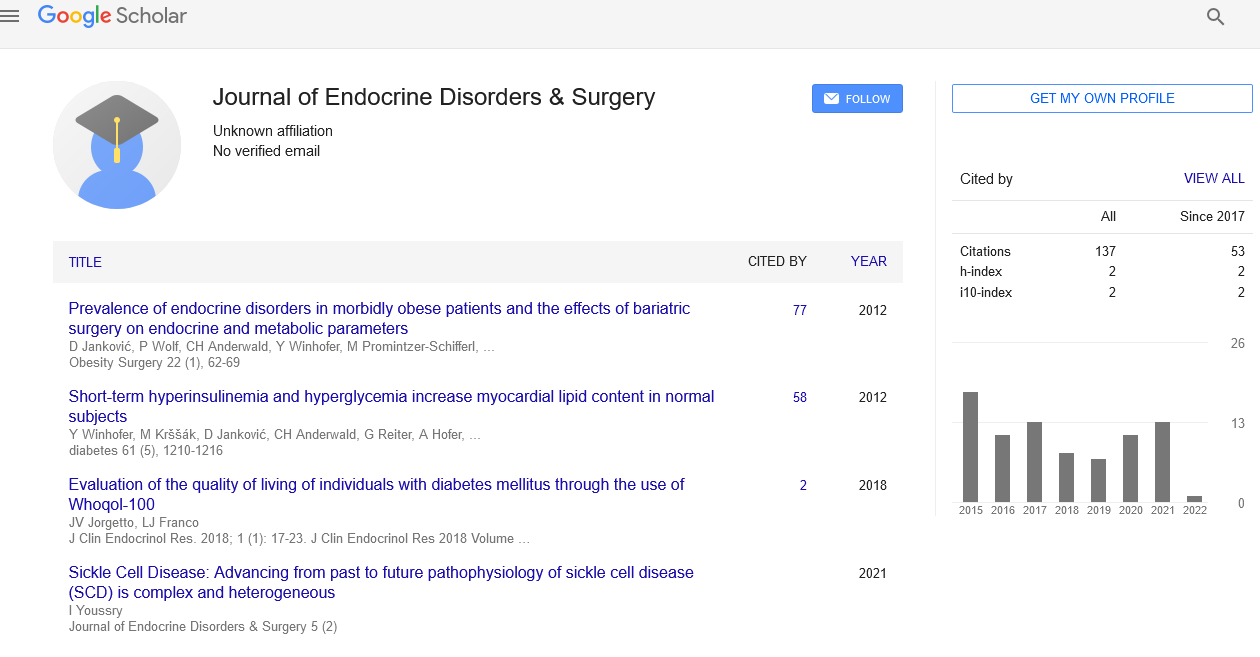All submissions of the EM system will be redirected to Online Manuscript Submission System. Authors are requested to submit articles directly to Online Manuscript Submission System of respective journal.

Sign up for email alert when new content gets added: Sign up
Abstract
An Assessment of Source and dosedependent Diabetes Ameliorating activity of Ethanolic Extract of Nigella sativa on Alloxan-Induced Diabetic Rat Model
Author(s): Md. Rafat TahsinMetabolic disorder diabetes results from an alteration of the secretion or action of insulin. Nigella sativa is a traditionally used specimen since ancient times. We aimed to investigate the hypoglycemic potential of ethanolic extract of Nigella sativa seed powder solution both in a dose and source-dependent manner as well as to fathom out its safety profile so that this plant can be used to ameliorate diabetes. Diabetes was induced in the rat model via intraperitoneal injection of alloxan (150 mg/kg). Ethanolic extract of T. Nigella sativa was administered to rats’ belonged to different groups. Blood glucose levels were assessed periodically and the safety profiles were evaluated through assessment of SGOT, SGPT, creatinine, and lipid profiles after sacrificing the animals. It has been evidenced that Nigella sativa possesses anti-diabetic activity. Furthermore, the extract is capable of reversing the disturbed pathological state towards a healthy status. Besides, these therapeutic consequences possess dose-dependent potentiality (p>0.05), further a noteworthy source dependent (p> 0.01) response were experienced. It may confer that the inconsistency associated with the remedial impacts between 2 same doses belonged to two distinct sources are due to accuracy of lab-based preparation, geographic area of cultivation, and also the season of collection. Apart from that, the visual and statistical inspections have evidence that the medium and the high dose are imparting almost indistinguishable therapeutic effects. Presumably, the reason lies beneath the receptor saturation issue.
Type 1 Diabetes mellitus (T1DM), is a chronic autoimmune disease which have stemmed as a leading global health problem and affects people of all ages, genders and races [1]. According to an estimation, around 5%–10% of adults worldwide are afflicted by this disorder and this will increase 20%–69% in the next 20 years [2,3]. Respectively, the outbreak of diabetes among those aged between 20 to 79 years may be expected to increase 7.7%, constituting 439 million by the year 2030 [4,5]. It is caused by complete or partial insulin deficiency which results in hyperglycaemia [6]. This elevation in blood glucose levels has stimulated the production ofreactive oxygen species(ROS), which cause cellular damage that promote the progression of acute and chronic complications including hypoglycemia, ketoacidosis, nonketotic hyperosmolar coma, diabetic retinopathy.
receptor agonists, thiazolidinediones (TZDs), sulfonylureas, amylin analogues, biguanides, and glucosidase inhibitor [14- 17]. Current medicaments for the treatment of type 2 diabetes mellitus have detrimental effects, and sometimes, they are reported for being ineffective in patient with chronic diabetes [18]. Furthermore, no medication can intensify both insulin sensitivity and secretion simultaneously. Medicinal plants have attained wide attention from scientists and have been deemed to be a beneficial adjuvant agent as an oral antidiabetic and hypolipidemic drug, mostly in developing countries, due to their integrated effects, rare or no side effects and lower cost. [19,20]. Besides that, Nigella sativa has also been thought to be safer among 1000 different antidiabetic medicinal plants compared to oral antidiabetic drugs [21]. Nigella sativa is an annual herbaceous plant spices, belonging to the family Ranunculacea which can be found mostly in Middle Eastern countries including Pakistan, India, Italy, Indonesia and Afghanistan [22]. It is most commonly known as “black seed”, “black cumin” or “kalajeera”. Different forms of Nigella sativa like extract, oil, and powder have been employed in traditional medicine to treat several illnesses such as fever, diarrhea, bronchitis, cough, hemorrhoids, gastrointestinal, hepatitis and tapeworm disease .
It is also known as an immunity enhancer. Nigella sativa extract has been demonstrated to possess immunopotentiating [26], antioxidant [27], antitumoral [28], antidiabetic [32], anti-proliferative [30], antimicrobial [30], antiasthmatic [33], antihypertensive [32], antiparasitic [31], antifertility [33], hypolipidemic [29], anti-inflammatory [29], and anti-pyretic [29] activities. Screening for unique phytochemical constituents from Nigella Sativa has earned researcher’s attention because of its ameliorative effects. The ameliorative effects of Nigella Sativa are mainly conferred to thymoquinone, which is one of the major bioactive compoundsthat was unveiled to have a defensive effect against diabetes [34]. Previous studies stated that thymoquinone introduced a marked decrease in Fasting Blood Glucose level and a noticeable increase in insulin levelsin rats [35]. Besides thymoquinine, the other compounds, namely thymol, thymohydroquinone, dithymoquinone, nigellone, alpha-hederin, flavonoids, alkaloids, volatile (0.40%–0.45%) and non-volatile (32%– 40%) oils, carbohydrates(31.0%–33.9%), protein (16.00%– 20.85%), fibre (5.50–7.94%), tannins, saponins, minerals such as iron, potassium, magnesium, calcium, zinc and copper (1.79%–3.44%), vitamin A and C, niacin, pyridoxine, thiamine, folate and fatty acids were also found to have therapeutic properties[36,37].Additionally, kalonji was presented to have no caustic side effects or toxicological effectsin both human and animal models[38].




